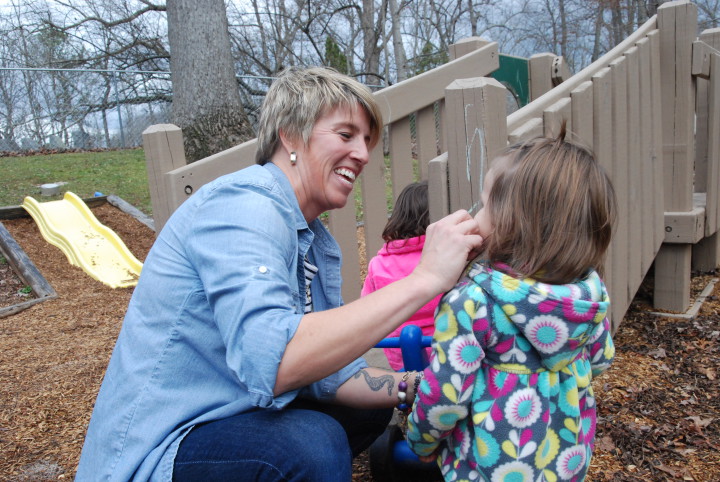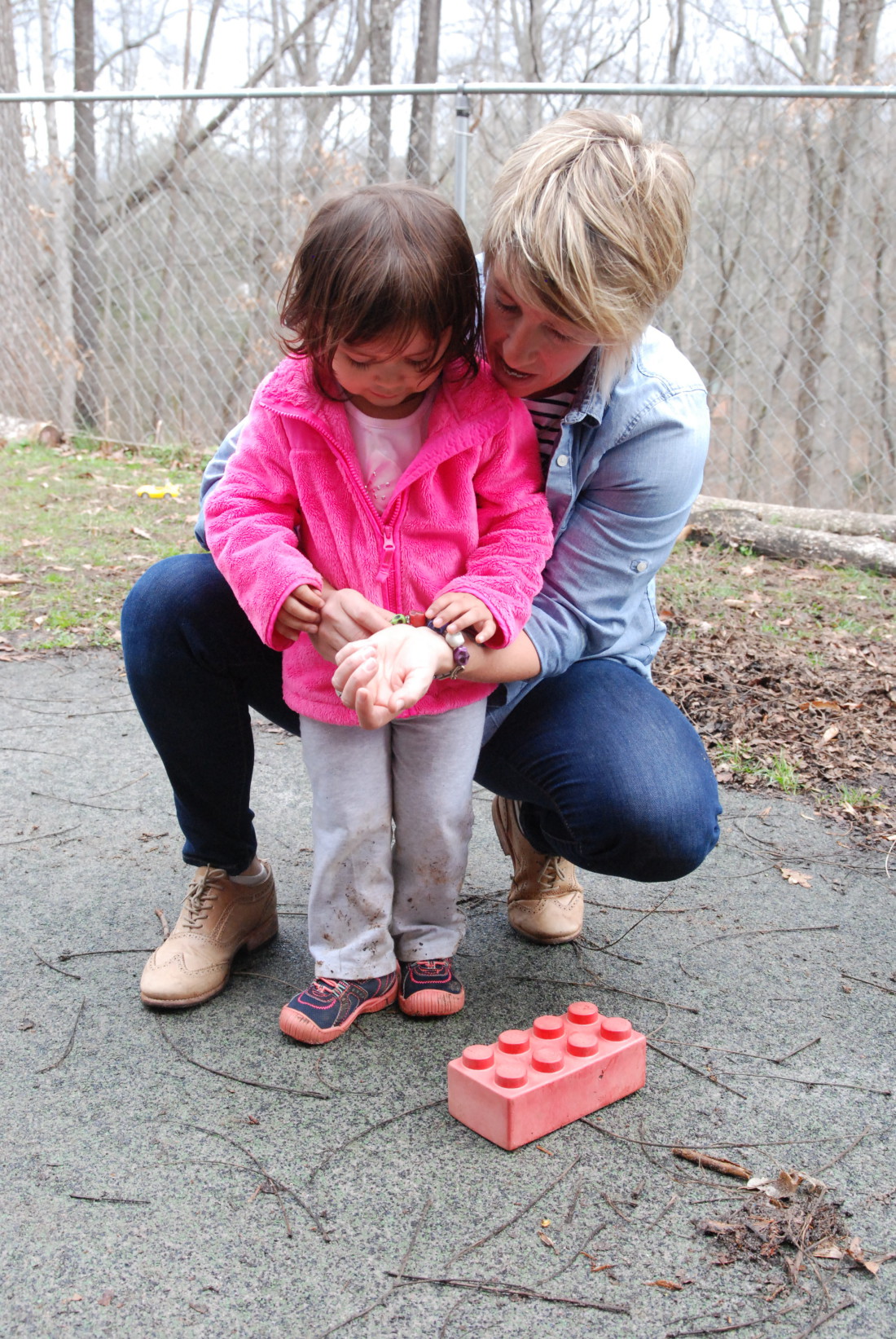The little boy disrupting his kindergarten class by insisting on doing what he wants most likely isn’t doing it out of spite. The little girl having a full-blown tantrum because she wants to play with a toy someone else already has probably isn’t just a spoiled brat. Until recently, though, most school personnel would have punished them for acting out.
But studies of the developing brain have shown that trauma and stress cause changes that leave children in fight-or-flight mode for the rest of their lives, making it difficult for them to react calmly to even seemingly normal situations.
The research has led to changes in the way kids are assessed and treated in some local schools (preschools, the Buncombe County Schools and several of the Asheville City Schools) and by the Buncombe County Sheriff’s Office.
These institutions are now guided by the findings of the 1995-97 Adverse Childhood Experiences Study, which surveyed and continues to track more than 17,000 people’s medical status. A cooperative effort between the Centers for Disease Control and Prevention in Atlanta and Kaiser Permanente’s Health Appraisal Clinic in San Diego, the ACE study looked at what traumas the participants had experienced as children. Most of those taking part were middle- and upper-middle class and had insurance, but for some, the traumas included the indignities of living in poverty or in a home where there was violence (directed either at the child or at someone else), witnessing violence on the streets, having a parent in jail or assorted other problems.
The more such experiences children have, the study found, the more likely they are to have psychological and physical problems later in life, including substance abuse issues, obesity and its related problems, sexually transmitted diseases, and even chronic respiratory and pulmonary problems.
“The problem is the effect of the stress hormone cortisol,” says Laura Martin, mental health and disabilities specialist at the Verner Center for Early Learning in Asheville. “It’s a real eye-opener to see the effects on the developing brain.”
The Verner Center is an Early Head Start facility, and many of the children there come from low-income families. Some also have other stressors. Martin has seen children who’d experienced domestic abuse at home and whose trauma was so severe that they were thought to have developmental disabilities.
“It turned out to be trauma, a term we use interchangeably with stress,” she explains. “They have the same effect on the brain. To the naked eye, the aggression appears unprovoked, but the triggers can be so minor — the smell of macaroni, for example, because that’s what was there when the child was beaten.”
Toxic stress
Pediatrician Olson Huff, the founder of Mission Children’s Hospital and the author of several books on child rearing, has worked extensively on what he calls “toxic stress” in recent years. Like many child advocates, he’s familiar with the results of the ACE study, one of the largest such investigations ever conducted.

“The changes in the brain are permanent, and if children aren’t taught coping strategies, they’re much more likely to land in the justice system,” says Huff. “Teachers are on the front lines of this effort.”
Unfortunately, says Martin, early childhood education workers are often paid poverty wages, causing trauma for the very people tasked with helping children overcome the effects of their own toxic stress. Huff believes more resources must be put into early childhood education, so children who’ve experienced trauma can be identified early and taught ways to deal with the damage caused by toxic stress.
Older children can still be helped, though, says David Thompson, director of student services for the Buncombe County Schools. Two years ago, the county system received a three-year, $1.2 million grant from the U.S. Department of Education to train teachers and counselors in how to identify children who need help and teach them effective coping strategies. “When we look at it as biology instead of bad behavior, it changes our entire perspective,” he points out.
To achieve this, the county is using the Community Resiliency Model developed by the Trauma Resource Institute, a Claremont, Calif.-based nonprofit. Although it can’t restore the brain’s original structure, the model does help children and adults understand what triggers outbursts and other negative behaviors.
“We call that a trauma-informed approach,” notes Martin.
For example, says Thompson, teachers are trained to look at their own chronic stressors, such as commuter traffic, and consciously change the way they deal with them. Maybe they can take a longer but less crowded route or listen to music while driving. Or they might employ things like “tapping therapy” (tapping lightly on acupuncture points), yoga or mindfulness.
“It’s about using self-regulating skills to try to bring yourself back down,” he explains.
Once school personnel become adept at using the skills themselves, they can more effectively teach them to children.
To date, more than 15 county schools staffers have been trained in these techniques, and the goal is to train all the system’s teachers over the next three to five years. Already, a tiered-response program is providing more interventions for children with greater needs. By the end of the five-year implementation period, all children will be learning these strategies at some level.
“Some of what we’re doing is for everyone,” notes Thompson. “You can take these methods and intensify them for children with some issues, and for kids with more serious issues, we can put in place more strategies.”
A new beginning
Buncombe County Sheriff Van Duncan is sold on the idea.
“A lot of the old ways of disciplining these kids just added to their trauma,” he says. “When we use a trauma-informed approach, we see more success: higher grades and higher graduation rates.”
When the new Family Justice Center opens this spring, he adds, all the people working there will be trained in these techniques.
Fully implementing the new methods will take time, however. “This is an entire shift in the way we do things,” stresses Thompson. “The transition will take three to five years, because we’re changing everything about how we respond. When you look at the impact of trauma on learning, it causes a shift in the way you think. It can’t be done overnight.”
To learn more about the Adverse Childhood Experiences Study, visit acestudy.org. For information on the method being used in the Buncombe County Schools and by the Buncombe County Sheriff’s Department, go to traumaresourceinstitute.com. To take the ACE survey and get help in assessing your score, visit acestoohigh.com/got-your-ace-score.






Before you comment
The comments section is here to provide a platform for civil dialogue on the issues we face together as a local community. Xpress is committed to offering this platform for all voices, but when the tone of the discussion gets nasty or strays off topic, we believe many people choose not to participate. Xpress editors are determined to moderate comments to ensure a constructive interchange is maintained. All comments judged not to be in keeping with the spirit of civil discourse will be removed and repeat violators will be banned. See here for our terms of service. Thank you for being part of this effort to promote respectful discussion.